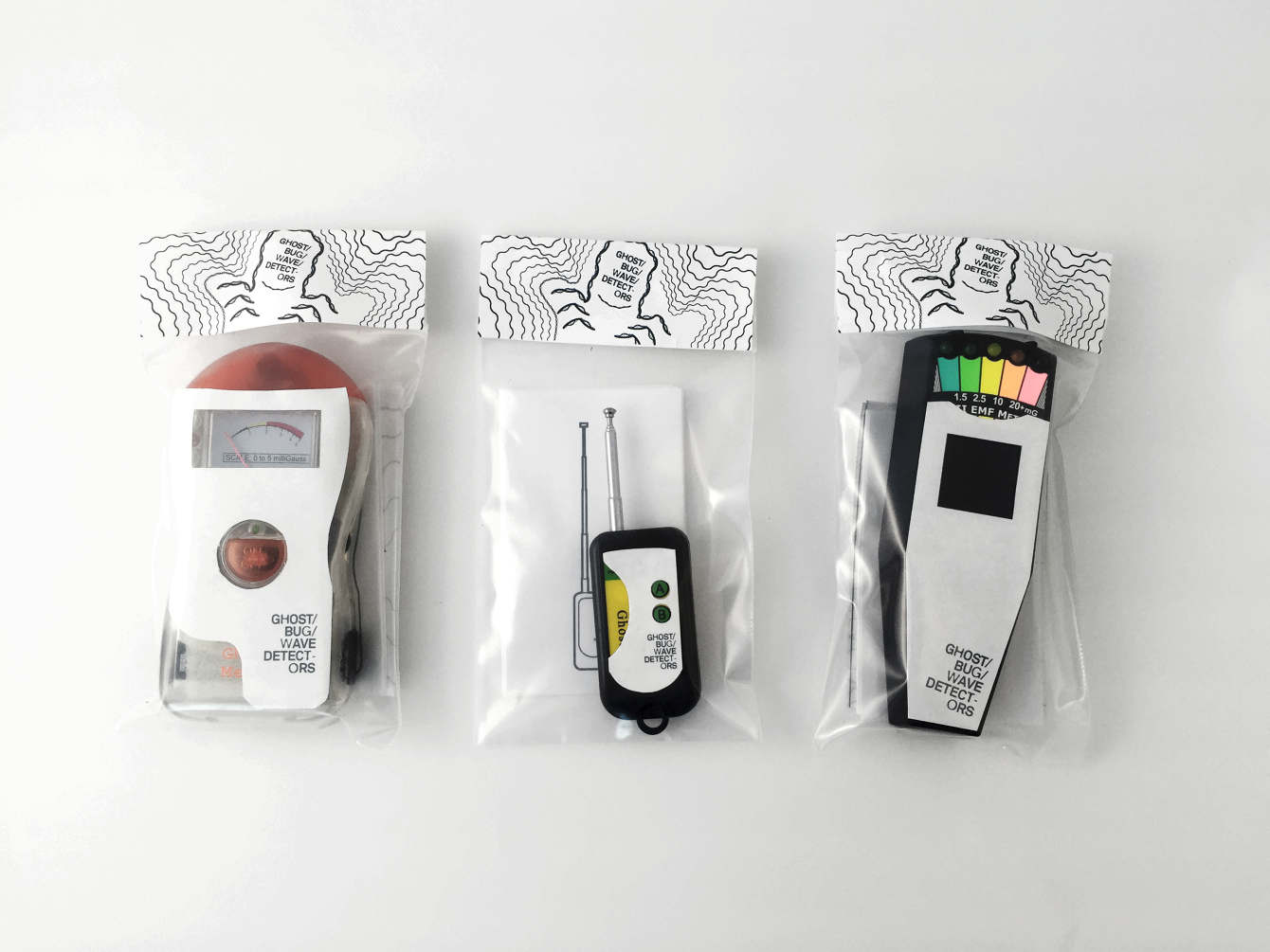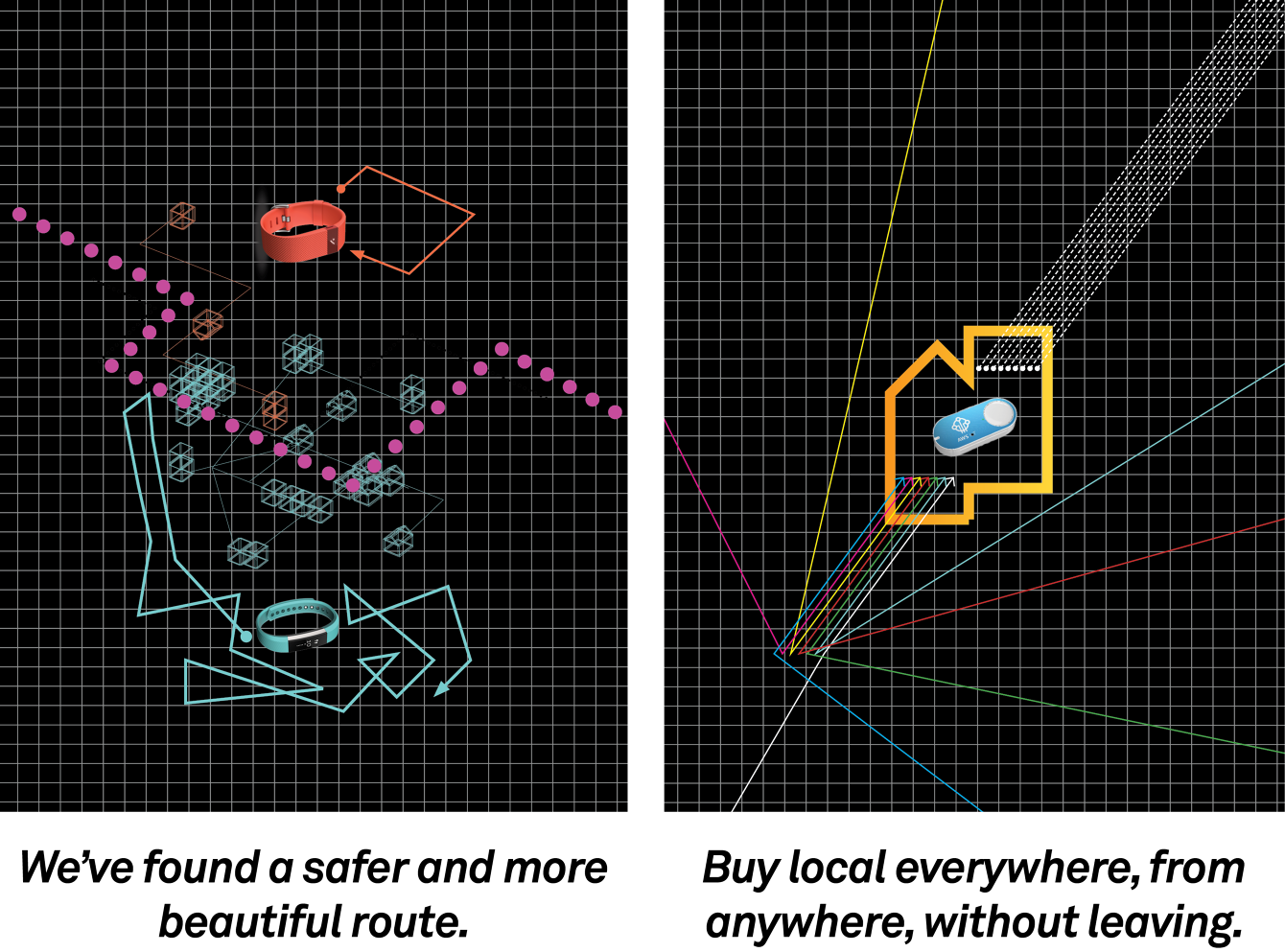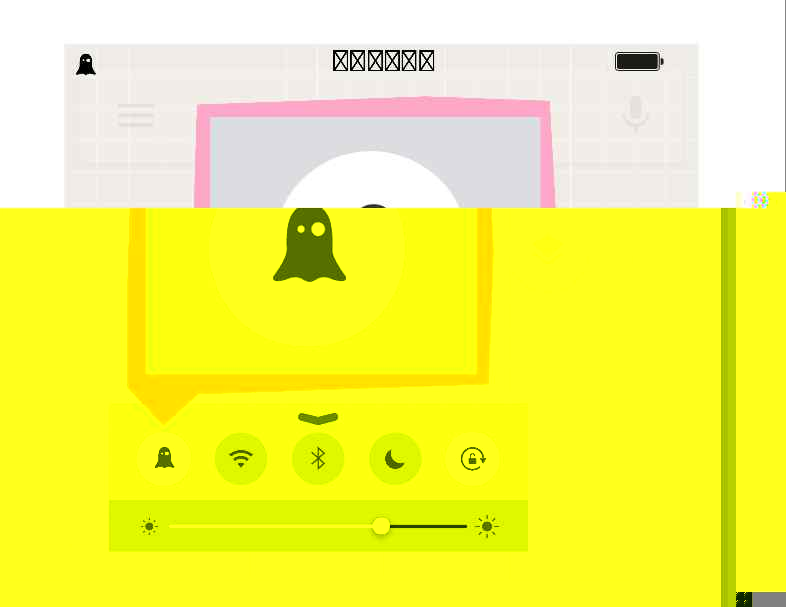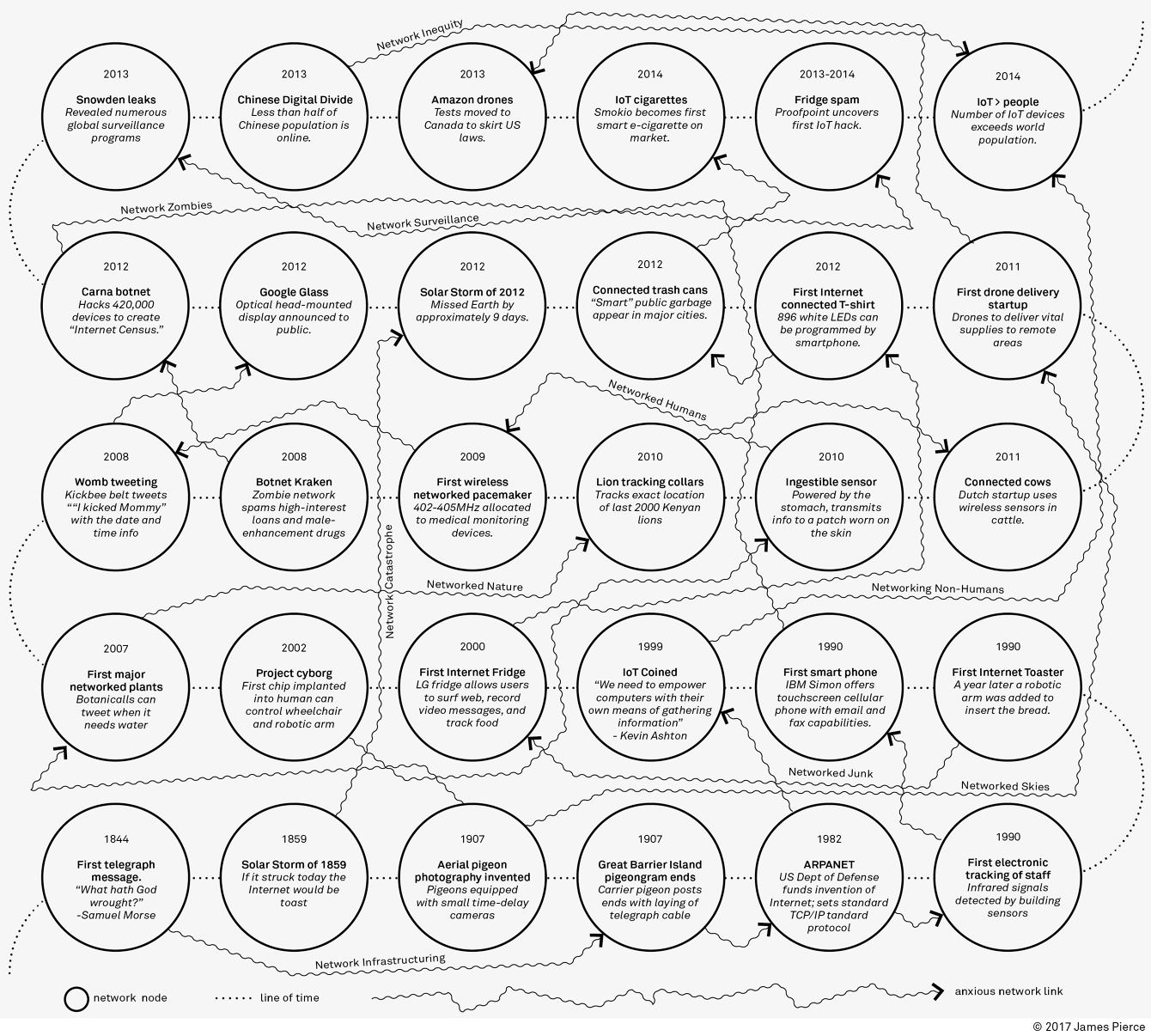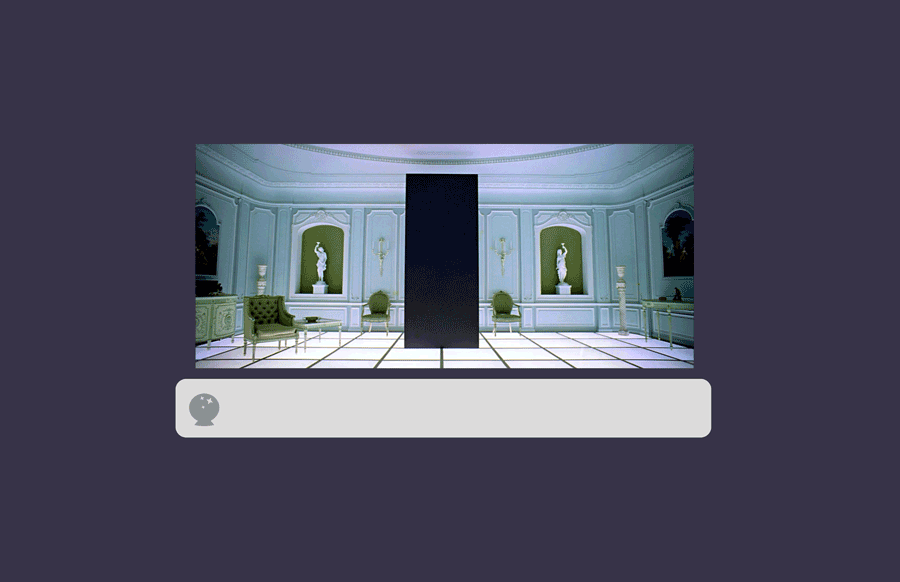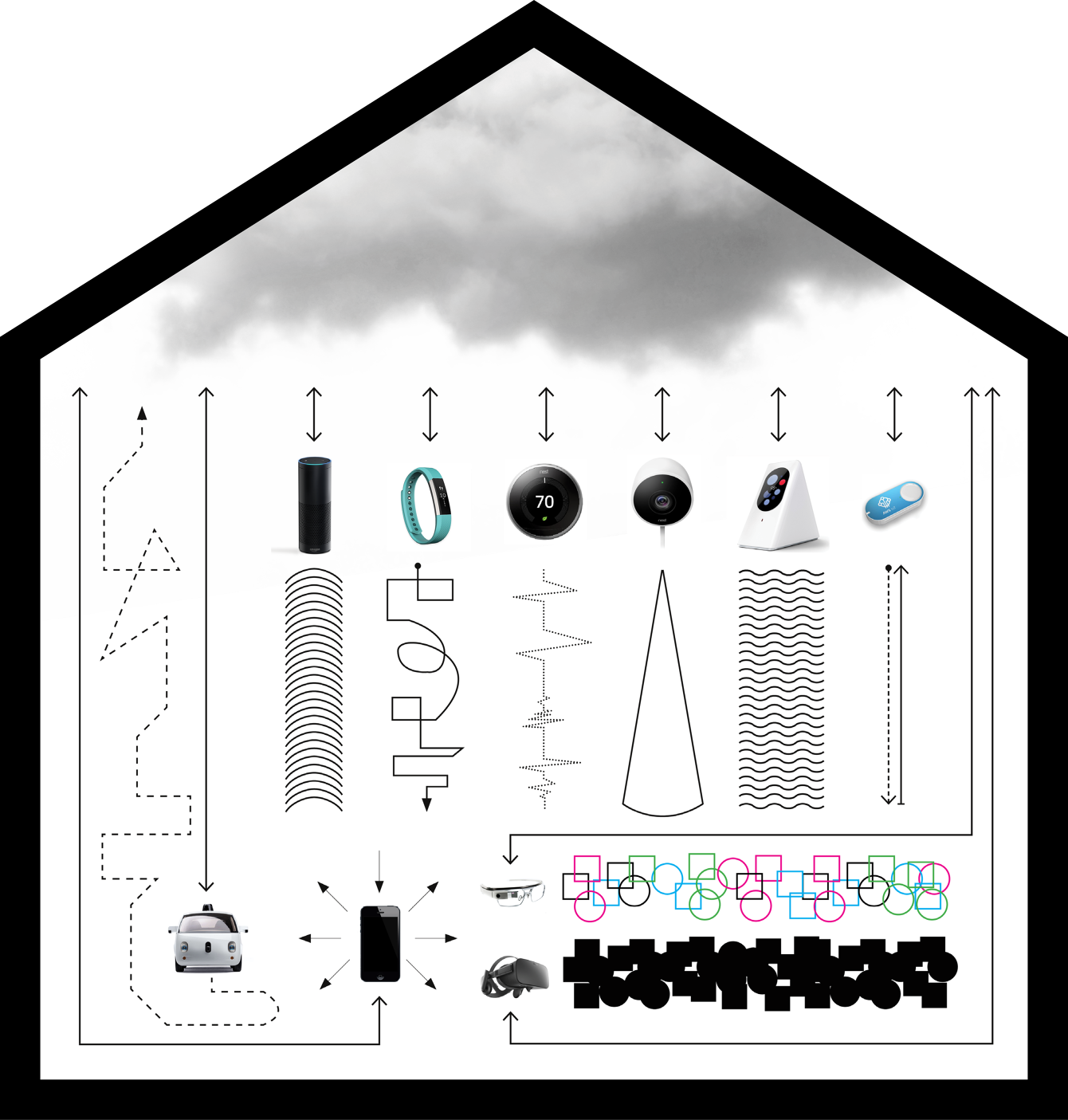Addressing Network Anxieties with Alternative Design Metaphors
Creator: James Pierce and Carl DiSalvo
This inquiry focuses on network anxieties, a term that highlights the tensions between the clearly positive affective dimensions of network technologies and their often more hidden or marginalized negative affective dimensions.
The vision of the smart home that hosts human lives in its embrace with technological intelligence has been part of the cultural imagination for decades, if not longer. As network technology evolves, it has brought not only the smart home, but a high level of connectivity to all aspects of our lives. Now that our long-idealized future is arriving, what wrinkles might appear in its lustrous fabric when seen up close? Some problems have already begun to arise in recent years, such as the surveillance and privacy concerns related to the Google Home and Amazon Alexa systems.
In this inquiry, Pierce and DiSalvo cast a wide net to consider network technology in terms of human anxiety. Their speculative approach imagines not so much the difficulties, but more so the discomforts that a highly networked world might bring. They coin the term “network anxieties,” which “highlights the tensions between the clearly positive affective dimensions of network technologies and their often more hidden or marginalized negative affective dimensions.” They choose the term anxiety because like both technology and design, it is future-focused— yet unlike these other two areas, it necessarily anticipates a negative outcome. Their use of the term anxiety also cleverly grounds their work in this particular moment in history. In recent years, many health professionals and news outlets have speculated that younger generations are suffering from an “anxiety epidemic” that may be in part due to the pervasiveness of technology in their lives. The term “network anxiety” allows us to apply a skeptical lens to technology that is normally permeated with “optimism and positivity,” as Pierce writes, and to do so in a relatable way.
In a series of seven graphics, the project explores ruptures where network technology’s alluring convenience might give way to privacy concerns or imagined problems that we are not yet accustomed to facing. Just like the ruminations of anxiety, the results of this inquiry are imprecise and foreboding images of an uncertain future. The images appear technical, yet disorient in their refusal of precise data or exact analysis— with the notable exception of “Network Anxieties Timelines,” which presents a detailed if not frenetic review of past networking milestones.
In “Smart Homes/Creepy Vibes,” an assortment of smart devices are displayed within a house, each with its own set of zig-zagging lines and vectors meant to represent their interaction with the surrounding environment and one another. The differing representations for each have no legend but each carries with it an affect carried through aesthetic. Above the assortment, a grey cloud hangs, ominous, in the attic. Here, the devices that comprise the smart home interact with one another and with the overarching system in coded ways indecipherable to the human inhabitant— technological oversight has become as opaque and powerful as the weather, leaving us with the same anxious feeling we get when we’re caught outside just before a rainstorm.
